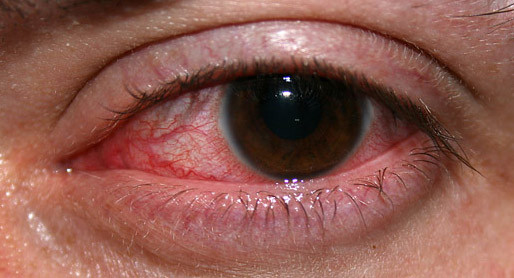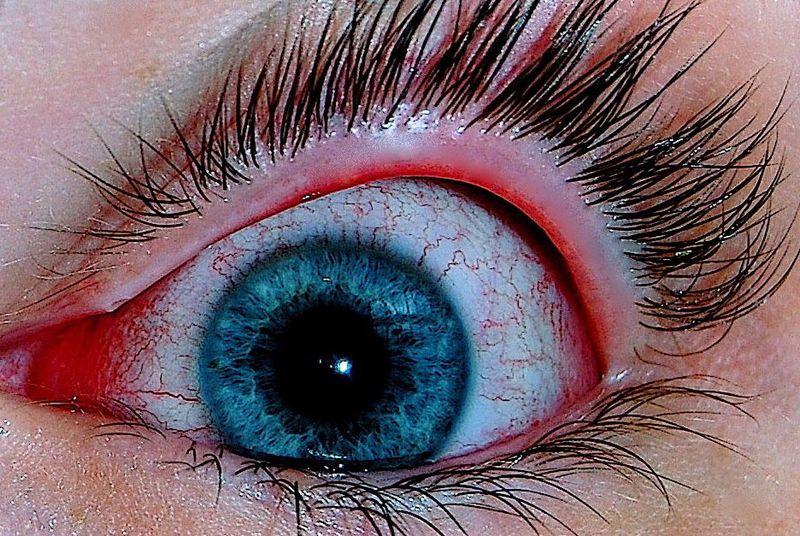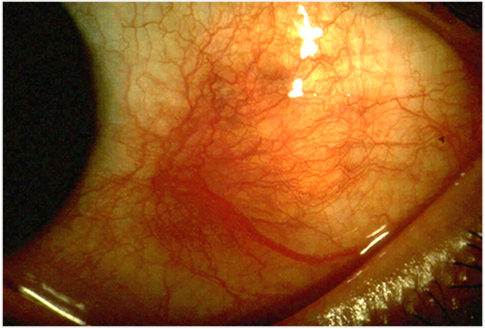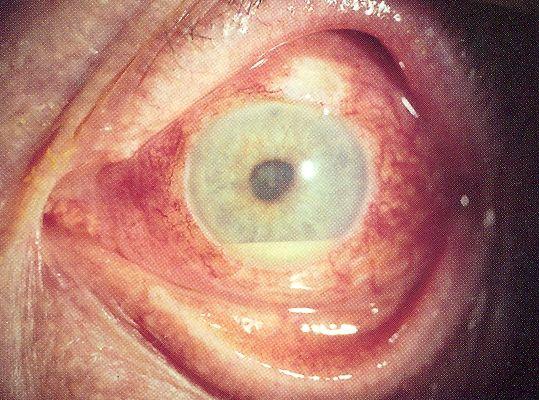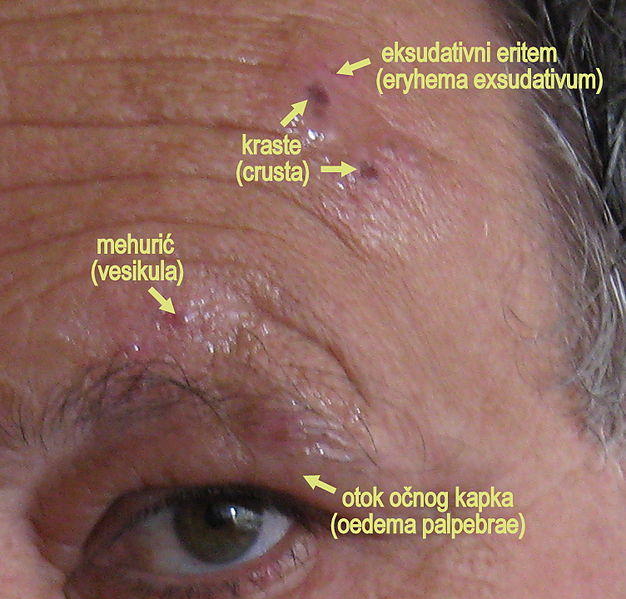Eye Pain and Painful Eye Socket Causes, Pictures, Other Symptoms
The eye is a highly sensitive organ to light, pressure and other sensations like itching and pain. Since it is exposed to the environment and lacks the protection of skin, apart from the eyelids, the eyes are prone to injury and diseases. Its location and closeness to several other highly sensitive structures may also be a factor to consider when investigating eye pain. In these cases, the pain may not be emanating from the eye or eyeball itself but referred from surrounding areas. Other signs and symptoms, ocular (eye) or non-ocular, may therefore provide a clue to the possible.
Pain in the Eye
Most causes of eye pain itself involve the cornea, the outer central transparent part of the eye, which is continuous with the ‘whites’ of the eye (sclera). It is covered by a thin clear mucous membrane known as the conjunctiva. The cornea is rich in nerves and therefore extremely sensitive to pain. Any condition affecting the cornea or its neighboring parts like the anterior chamber of the eye which is filled with the clear watery aqueous humor, the iris and its peripheral attachment known as the ciliary body can induce pain. The cornea is therefore prone to injury, infection and other causes of inflammation. These days with the widespread use of contact lens, the cornea is even more at risk of injury and infections.
Terms for Eye Pain
It is important understand certain terms when discussing and assessing any disease of the eye.
- Conjunctivitis is the inflammation of the conjunctiva.
- Keratitis is inflammation of the cornea.
- Scleritis is the inflammation of the sclera.
- Iritis is inflammation of the iris, the front part of the middle layer of the eye, which is the pigmented part of the eye that is responsible for the variation in eye color among people.
- Neuritis is the inflammation of the nerve and in relation to the eye, optic neuritis is inflammation of the optic nerve.
- Blepharitis is inflammation of the eyelid.
Causes of Eye Pain
Cornea and Conjunctiva
The cornea and conjunctivata of the eye are prone to injury and infections as it makes direct contact with the environment when the eyelids are open. It accounts for most cases of eye pain. Some of the diseases that may affect the cornea and/or conjunctiva include :
- Contact lens keratitis – inflammation of the cornea due to irritation by contact lens which may be non-infectious (sterile) or infectious.
- Cornal abrasion may be caused by foreign bodies or even torn contact lens
- Infections
- Epidemic keratoconjunctivitis is often due to viral infections and seen in outbreaks of “pink eye”.
- Herpes simplex keratitis which is also viral in nature and caused by the herpes simplex virus (HSV).
- Bacterial keratitis is seen more frequently with long term contact lens users.
- Acanthameba infections may be seen when contact lens are washed with tap water.
- Fungal infections are uncommon but more likely seen in immunocompromised patients (HIV-positive particularly).
- Photokeratitis which is also known as welder’s keratitis or UV keratitis, is induced by exposure to very bright light, either articifical or natural (sunlight).
- Corneal ulceration is seen with severe mechanical or chemical trauma, long term inflammation particularly in infections that are left untreated and persistent inflammation of the eyelids (blepharitis).
Keratitis (corneal inflammation). Picture from Wikimedia Commons
Conjunctivitis (pink eye). Picture from Wikimedia Commons
Sclera and Uvea
Scleritis, which is the inflammation of the whites of the eye, may be seen along with conjunctivitis or keratitis. Due to its close relationship with the underling uvea (middle layer of the eye comprising the choroid, ciliary body and iris), it may be associated with inflammations in these areas. Vasculitis which is systemic inflammation of blood vessels may also be a cause of scleritis. The outermost part of the sclera, known as the episclera, may be inflamed and this is known as episcleritis. It arises with infections like herpes zoster, syphilis and tuberculosis or non-infectious disorders like rheumatoid arthritis or Sjogren’s syndrome. Inflammation may be isolated to just one part of the sclera or involve the entire sclera.
Scleritis (inflammation of the sclera). Picture from Wikimedia Commons
Iritis rarely arises on its own but may be associated with scleritis or the other parts that make up the middle layer of the eye (uvea) including the choroid and ciliary body. When it involves the other parts of the uvea, it is known as uveitis. It can be acute or chronic and may be due to physical trauma, infections, cancer or autoimmune diseases that are not normally associated with inflammation of the eye.
Eye Cavity and Internal Structures
Most of the internal structure of the eye when diseases or damaged do not cause any pain. Cataracts, retinal tears and even a detached retina are usually painless. One of the most prominent causes of eye pain associated with the internal structures is that of raised intraocular pressure (high eye pressure). It may lead to glaucoma and patients with a specific type of glaucoma known as angle-closure glaucoma are more likely to experience pain particularly in acute cases.
Inflammation of the internal substance of the eye, the aqueous and/or vitreous humor, is known as endopthalmitis. It is commonly caused by infections, toxicity associated with substances used during intraocular surgery, an artifical lens, foreign bodies, trauma or spread of cancer (metastasis). Pus may accumulate within the eye and this is known as a hypopyon.
Hypopyon (pus in the eye) with keratitis and scleritis. Picture from Wikimedia Commons
Optic Nerve
Optic neuritis is the inflammation of the optic nerve. Apart from pain, there is usually some degree of visual disturbance or loss of vision. Optic neuritis is more commonly due to autoimmune diseases like multiple sclerosis and neuromyelitis optica. Other causes may not be specific for the optic nerve and involve other parts of the eye or socket. This includes infections, drugs, radiation and systemic autoimmune conditions like vasculitis or systemic lupus erythematosus (SLE).
Eyelids
Blepharitis is inflammation of the eyelids and may also involve the eyes, particularly the conjunctiva, cornea and sclera. It usually arises at the base of the eyelid where oil glands (sebaceous glands) occur with the hair follicles (eyelashes). This area may be prone to various skin diseases, infections, allergies and non-infectious inflammatory conditions.
Other eyelid conditions that may contribute to eye inflammation and pain includes an :
- Inverted eyelid (entropion) where the eyelid is turned inside and rubs against the cornea thereby causing corneal abrasion.
- Everted eyelid (ectropion) where the eyelid is turned outwards and exposes the eye to air thereby leading to dry eyes.
Painful Eye Socket
Pain around the Eye
It is important to understand the different parts of the eye when considering pain emanating from this area. The eye is housed in the bony area of the skull known as the orbit, or simply as the socket. It is cushioned by orbital fat and protected by the two eyelids.
- Below the eyeball itself lies the the maxillary sinus and the teeth.
- To the inner side (medial) is the nose (nasal cavity) and the ethmoid and sphenoid sinuses.
- Above the eye lies the frontal sinus as well as the brain and meninges housed within the cranial cavity.
- In front of the eye lies the eyelids.
The skull itself has many superficial muscles which may also be responsible for pain in and around the eye. To the outer side (lateral) lies the large temporal muscles which play a role in chewing (mastication).
Therefore it is possible that eye pain or pain in the eye socket may be due to :
- Sinusitis
- Rhinitis
- Cluster headaches
- Migraines
- Toothache
- Raised intracranial pressure
- Meningitis
- Overuse of muscles during chewing
Eye strain, from looking at a computer screen and reading for too long, does not cause eye pain as such although there is soreness. It may, however, lead to headaches or neck pain. It has become extremely common these days due to the widespread use of computers and has been termed computer vision syndrome.
Orbital Cellulitis
Orbital cellulitis is inflammation of the fat surrounding the eyeball and often extending to neighboring structures including the eye, forehead (eyebrows), cheek and eyelids. It is an acute condition that is almost always due to a bacterial infection. Trauma and insect bites may precede the infection. Orbital cellulitis is a very dangerous condition and should be considered a medical emergency.
Herpes Zoster Opthalmicus
This infectious condition is mostly isolated to the eyeball but can involve surrounding tissue like the eyelids and skin of the forehead and even cheek. Herpes zoster opthalmicus (HZO) is caused by the varicella zoster virus which is also responsible for chickenpox and shingles. In this case, however, it involves the eye and surrounding tissue. Patients present with both eye and skin symptoms.
Herpes zoster opthalmicus (HZO). Picture from Wikimedia Commons
Other Signs and Symptoms
Eye pain and pain around the eye is a symptom on its own and not a condition. Depending on the cause, it may present with various other signs and symptoms including :
- Redness of the eye
- Excessive tearing
- Excessive mucus from the eye
- Pain upon moving the eye
- Headaches
- Loss of vision – partial or complete
- Flashing lights, halos or glare
- Light sensitivity
- Swelling of the eyeball or around the eye

